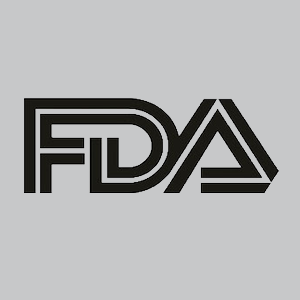Article
Levetiracetam Prescribing Information Updated
Author(s):
The label update includes adjustments to the withdrawal risk section and a new subsection for its use in specific populations.

The FDA has updated levetiracetam drug label, making a number of alterations to the antiepileptic drug's prescribing information. Most notably, the agency made a revision to the warnings for withdrawal seizures.1
As of November 21, the FDA noted that “as with most antiepileptic drugs, levetiracetam should be withdrawn gradually because of the risk of increased seizure frequency and status epilepticus. But if withdrawal is needed because of a serious adverse reaction, rapid discontinuation can be considered."
Additionally, there were changes made to the adverse reactions section and a newly added subsection under use in specific populations. Under adverse reactions, there were some alterations made in the titles of tables, as well as a newly added table. The new subsection is a risk summary for lactation, noting that the agent is excreted in human milk, and no known data reflect the effects of this on infant health.
READ MORE: Case Report: New-Onset Paroxysmal Episodes in an Infant
The treatment was originally approved in November 1999, marketed as Keppra by UCB. It is indicated as adjunctive therapy in the treatment of partial-onset seizures in adults and children 4 years of age and older with epilepsy, in the treatment of myoclonic seizures in adults and adolescents 12 years of age and older with juvenile myoclonic epilepsy, and in the treatment of primary generalized tonic-clonic seizures in adults and children 6 years of age and older” with idiopathic generalized epilepsy.2
Recently, in a NeurologyLive Peer Exchange, Rodney A. Radtke, MD, professor of neurology, Duke University School of Medicine gave an overview of the epilepsy treatment paradigm. In that conversation, he offered insight into the use of levetiracetam, noting that its versatility is useful in treating epilepsy.
“Levetiracetam is a drug in which levels are limitedly useful in that there are no drug-drug interactions,” he explained. “Usually, there’s a very close correlation between patients and dose in terms of what the level is, and also the adverse effects don’t seem to be parallel with the dose or the level. So, it’s a drug that can be used very readily without the use of levels and not be very limited.”
In 2018, data published from a head-to-head comparison suggested that levetiracetam increased the rate of infants free of monotherapy failure by 28% more than phenobarbital in pediatric patients with nonsyndromic epilepsy (NSE). The findings suggested that if 100 infants who were treated with phenobarbital received levetiracetam instead, 44% would be free from monotherapy failure, compared to the standard rate of 16% observed in the study.3
REFERENCES
1. Drug Safety-related Labeling Changes (SrLC): Levetiracetam in Sodium Chloride. FDA website. Center for Drug Evaluation and Research (CDER). Issued November 21, 2019. accessdata.fda.gov/scripts/cder/safetylabelingchanges/index.cfm. Accessed November 26, 2019.
2. Keppra (levetiracetam) FDA label. FDA website. Updated 2019. accessdata.fda.gov/drugsatfda_docs/label/2009/021035s078s080,021505s021s024lbl.pdfAccessed November 26, 2019.
3. Grinspan ZM, Shellhass RA, Coryell J, et. al. Comparative effectiveness of levetiracetam vs phenobarbital for infantile epilepsy. JAMA Pediatr. 2018;172(4):352-360. doi: 10.1001/jamapediatrics.2017.5211.





